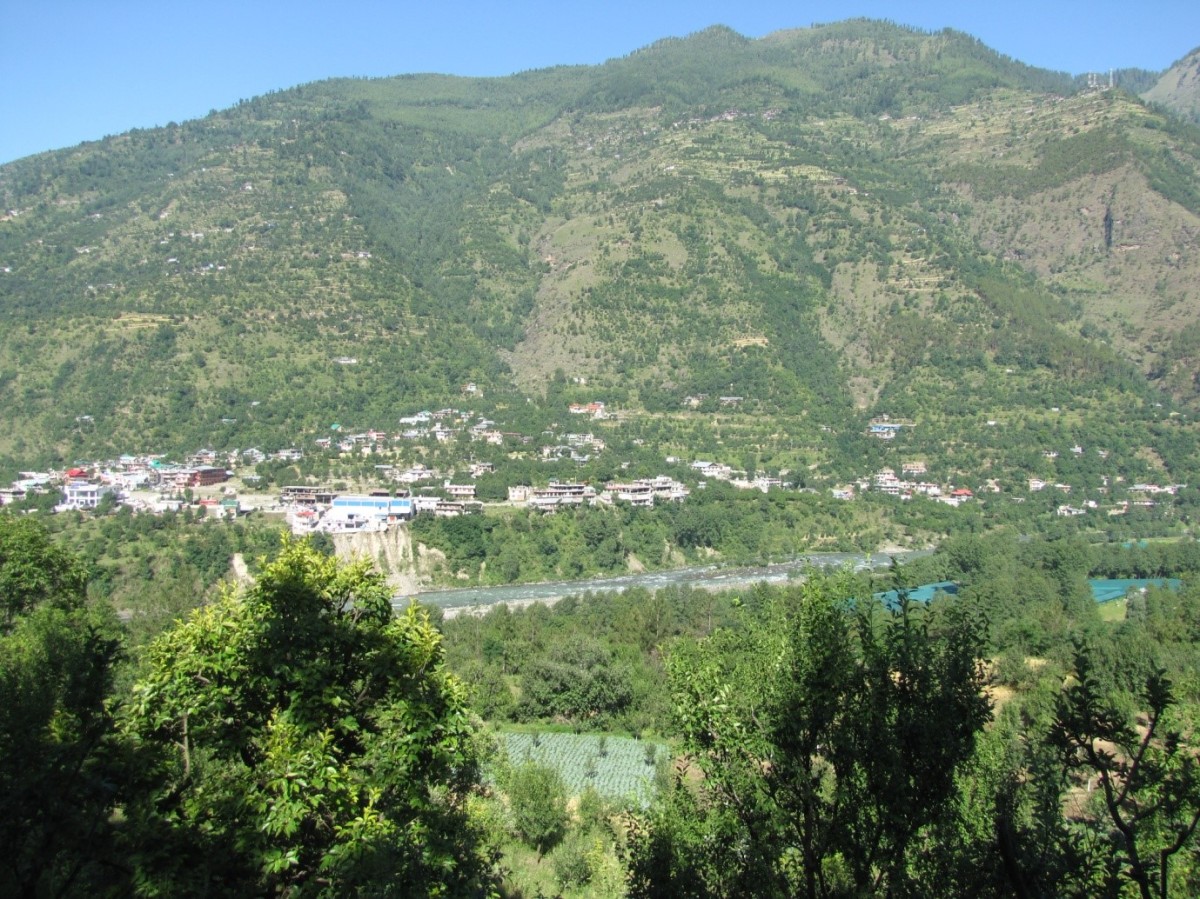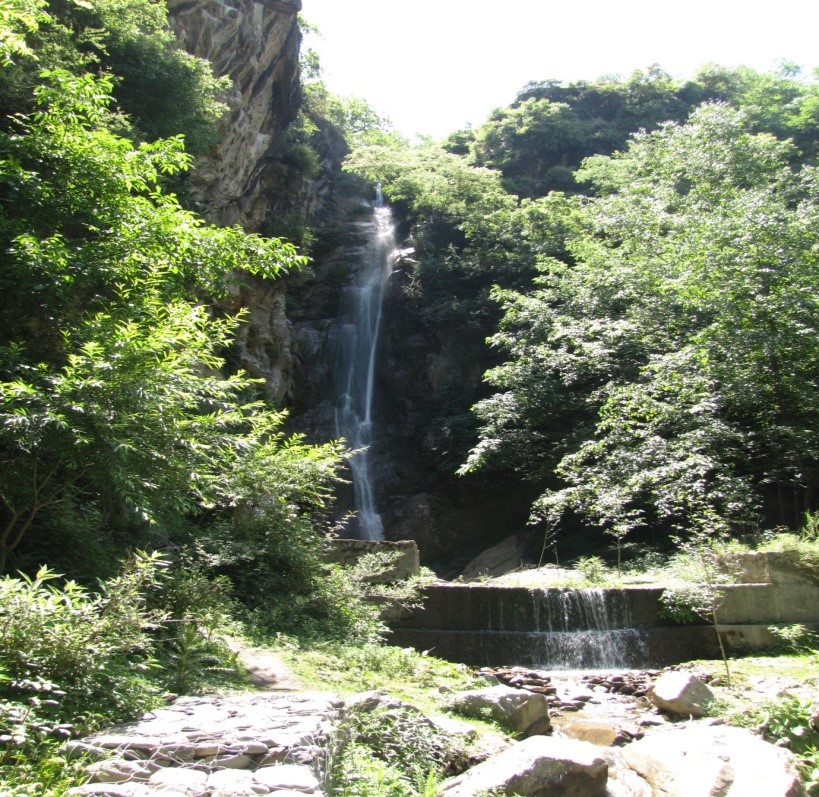For part 3, click here: Part 3
Day 8: Trek from Nagroni to Nauya Tapru via Chandrakhani pass, Distance – 14 km (approx) (9000 ft) (7 hrs, according to YHAI) (I took 11 hours to complete the trek)
We got up in morning at 0200 hours, deposited sleeping bags and blankets. Had breakfast at 0300 hours, and collected packed lunch which included mathri and frooti. We started our trek in morning at 0330 hours. All the trekkers carried headlamps or hand torches. We were trekking on rocky edged trails to narrow trails. Soon there was sunrise; the sun was behind the clouds. We witnessed all the colors of trekking. First, it rained, then hailstorm and ended with snowfall.
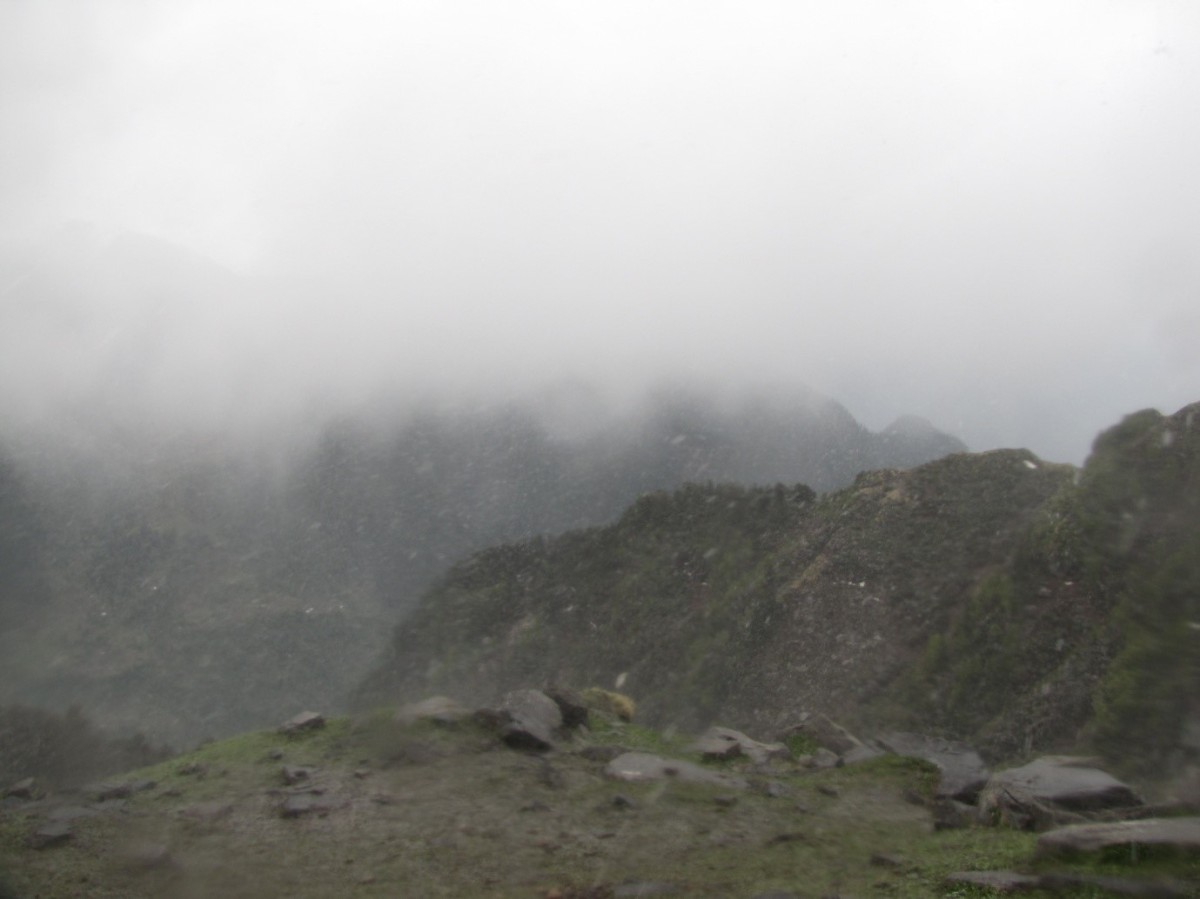
Snowfall during trek to Chanderkhani Pass
During snowfall, we were trekking on a narrow trail. The snow was small and stuck to my wind cheater. It was white and smooth. As it is clear in the above photograph that visibility reduced to minimal. Snow was directly coming in our direction. Instead of stopping, we kept on moving with a small and cautious steps.
As we kept on going up and up, the scenic views were awesome and the most beautiful ones.
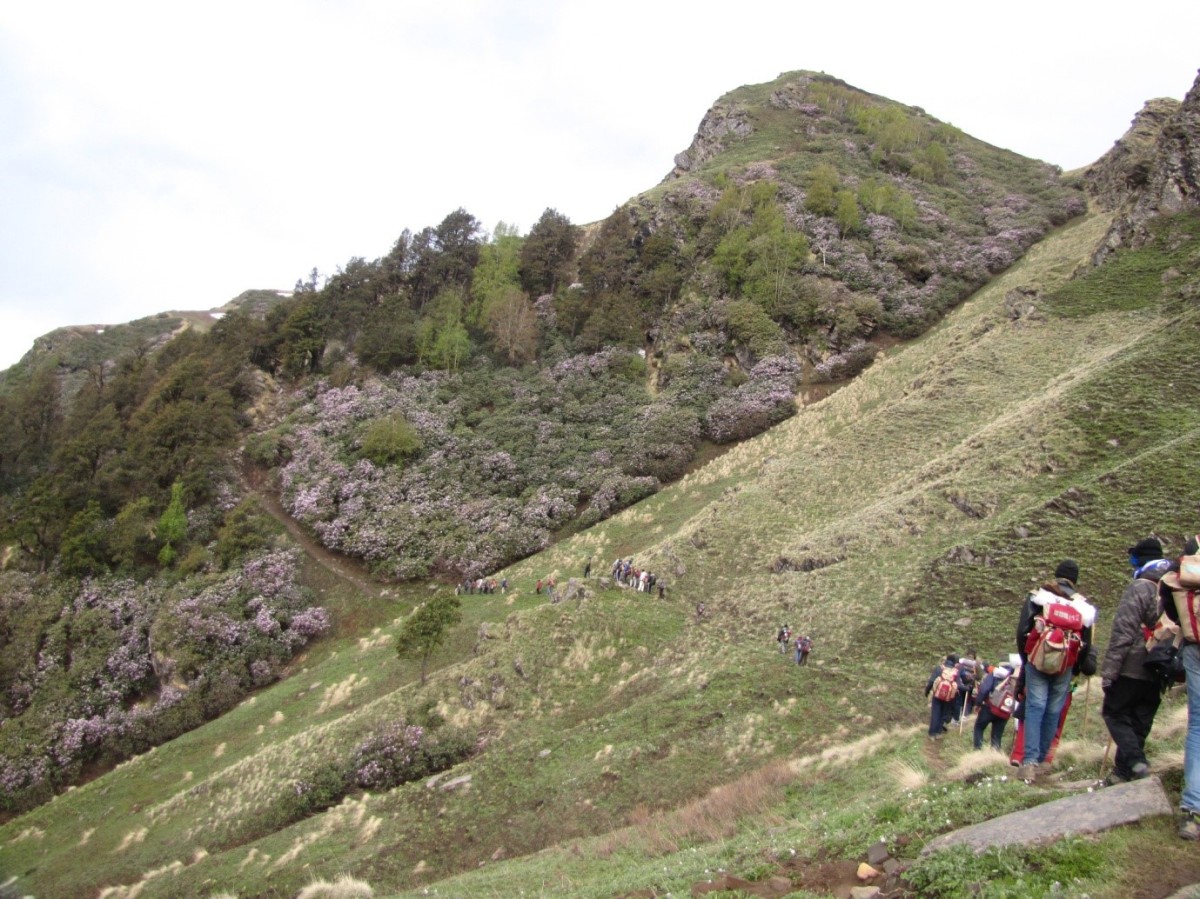
A long trail
We tried our best to capture them in our cameras, however, after seeing the results, I felt that the God made eyes are the best in comparison to man-made camera lenses.
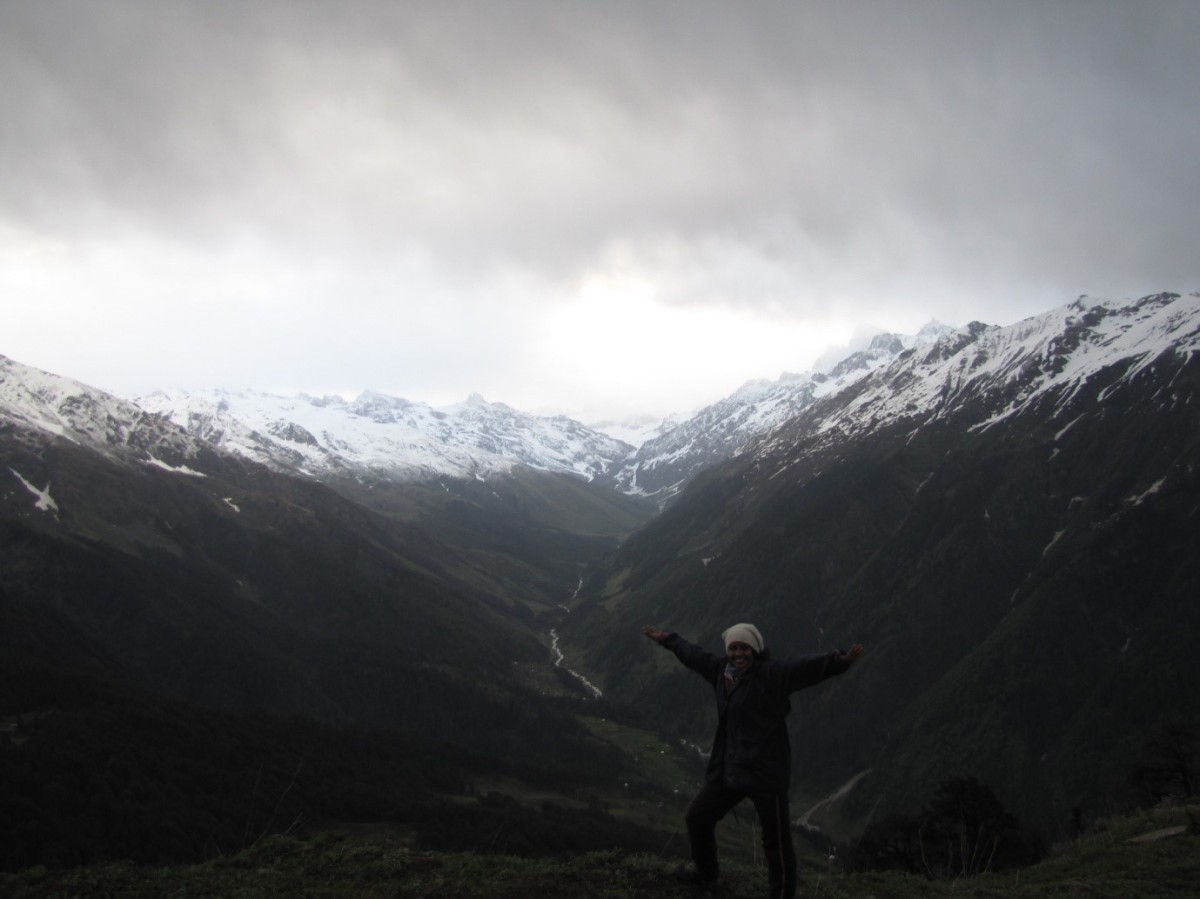
A breathtaking view of the mountains during the trekking
We trekked on rocky and uneven trails. They required the proper strategy to climb up to the next rock. The most amazingly killing experience for me was running crazily on the sloping valleys. I was actually dreaded by the thoughts of slipping down and breaking my bones, however, it turned out to be an amazing experience.
After trekking on rocky trail, the moment came for which all the trekker had waited…..walking on snow.
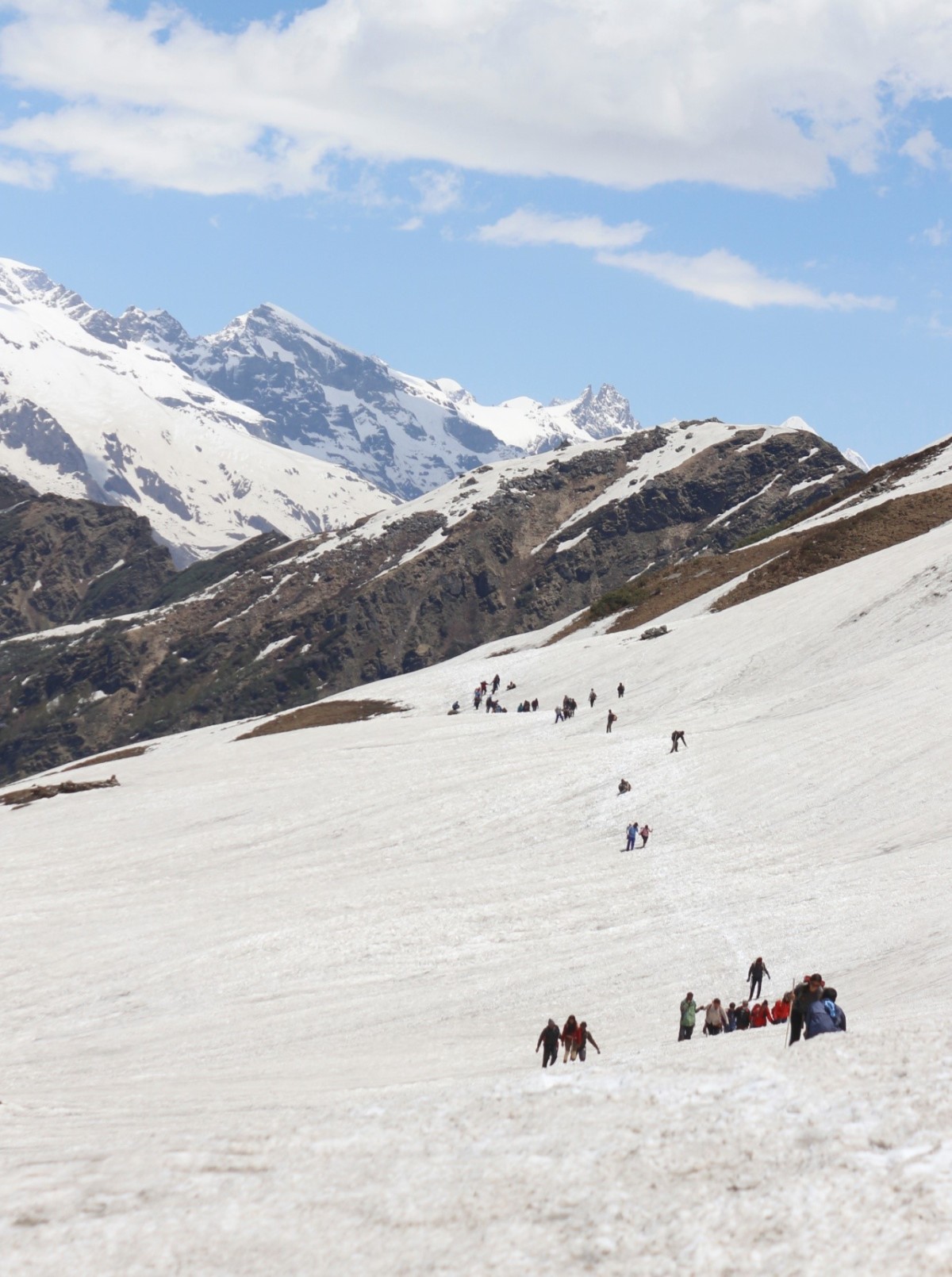
Walking on snowy edge is difficult as it becomes very slippery due to the melting snow.
Photo Gratitude: Ravindra Chouhan Sir
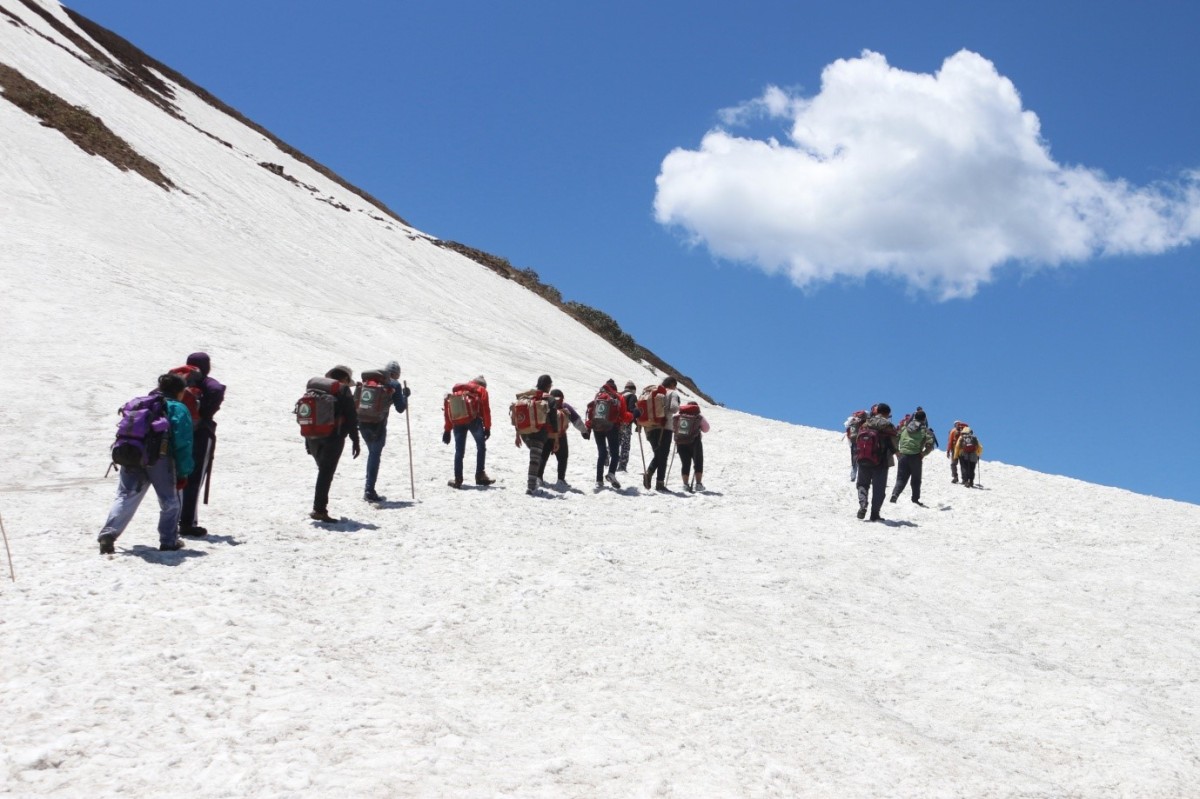
Trekking on snow trail
Photo Gratitude: Ravindra Chouhan Sir
One of the co-trekkers faced breathlessness and oxygen had to be provided to her. Soon we reached the Chanderkhani Pass.
As I summit the Chandrakhani Pass, I realized that the following saying is completely true. “Somewhere between the bottom of the climb and the summit is the answer to the mystery why we climb.” — Greg Child.
We had reached the highest altitude point (3660 meters) of our trek. Our prize was the highest point of our trekking expedition and the spectacular views of the valley. The views from this point were breathtaking and we were spellbound by the beauty of the great Himalayas. One needs to be there to feel it. It can be felt and not expressed. It provided a panoramic view of the ranges around the Chandrakhani Pass. The views were fabulous and I felt it worthwhile to be at Chandrakhani Pass. That is the beauty of any trekking expedition. Lots of local people were already there to worship their Gods.

Worship Place at Chandrakhani Pass
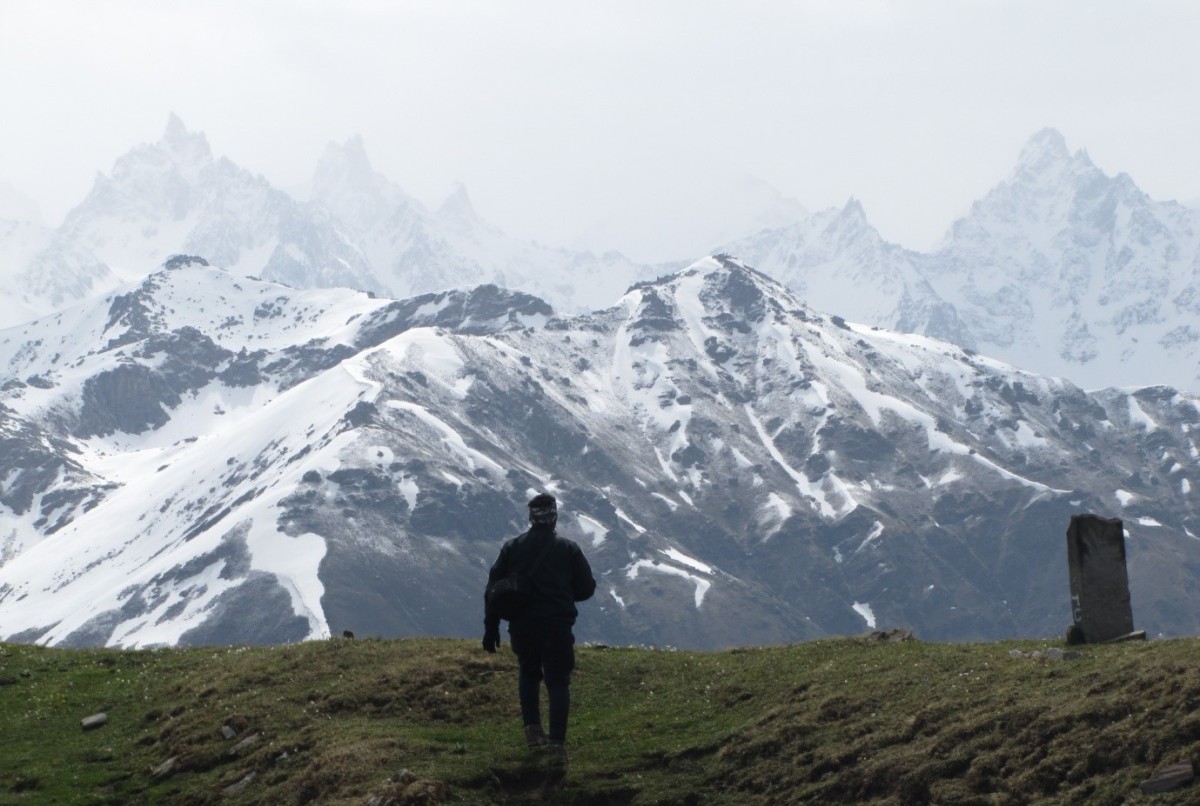
A view of Snow clad peaks from Chandrakhani Pass
We had our mathri and Frooti. From here, the next part of our trek started, which was partly on snow. The snow trek went on smoothly. We also had three snow slides. We were instructed about the manner in which one needs to slide and how to use elbows to apply brakes during the slide. The snow slides were the most enjoyable part of the entire trek. During the first snow slide, trekkers were apprehended, however, after the first slide, their confidence levels resumed to the higher levels and back-benchers came forward and were the first ones to slide. Third slide was a short one.
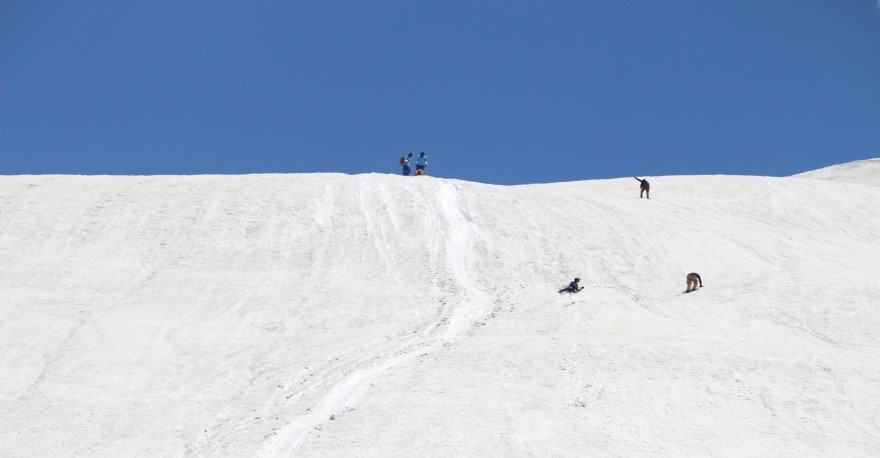
Snow Sliding
Photo Gratitude: Ravindra Chouhan Sir
After that, it was walking on snow-melt muddy water, here trekkers slipped, instead, of crying or getting upset, all of us were laughing and enjoying. The most significant part of this day’s trek was that trekkers had learnt to slip and most importantly rising on their own and laughing at the same time. We were on this trek in the first week of June, therefore, not much snow was there and whatever, was there had started melting. After snow trail, there was a rocky trail. It seemed that someone had put all those rocks intentionally to make it a trek route. It seemed to be river of unending rocks. After rocky trail, it was a broad trail, on which a Maggi point was located. It started drizzling. Some moved ahead and some waited there, enjoying their Maggi. Post-snow sliding, I could not take any photographs as I wanted to enjoy the trekking and I found that my co-trekkers had also not indulged into photography due to battery discharge or their own indulgence into enjoying the trekking and scenic views at the fullest.
Everyone walks according to his or her own pace and momentum. The turning point of the trek or call it a funny point – A few went ahead of us. And suddenly, there were tents which were visible and looked like typical YHAI tents. We were trekking from morning 0330 hours and now it was already 1330 hours. Trekkers were delighted at the sight of the tents and ran towards those tents. When we saw them from above, my co-trekker told me that they are going to wrong tents and asked me to move ahead (The guide had informed my co-trekker about the trek route). I asked my co-trekker to re-confirm. He went ahead and confirmed that our tents were visible from his standing point. Next morning, we were informed that lots of our co-trekkers had taken a wrong route in over-excitement. We trekked, our actual camps were visible. It was raining. We entered into allotted tents. Our Camp Leader was a great person. He came to our tent, asked for a bottle, filled it with hot tomato soup and handed it over to us. We were moved to see such hospitality after a twelve hours strenuous trek. We were also allowed to have lunch inside the tents as all of us were exhausted and it was also raining outside.
By the end of this leg of trek, I realized that “Our greatest glory is not in never falling but in rising every time we fall”- by Confucius.
Day Nine (Final Day): Nauya Tapru to Naggar via Rumsu Village and transfer to Base Camp by Bus, Distance – 7 km (approx) (4 hrs).
The next day, our formal meet with our Camp Leader. He congratulated all of us for completing the most strenuous trek of the entire trekking expedition. He conferred the title, “WARRIORS” to us. Then he briefed us about the day’s trek, that it was all downhill.
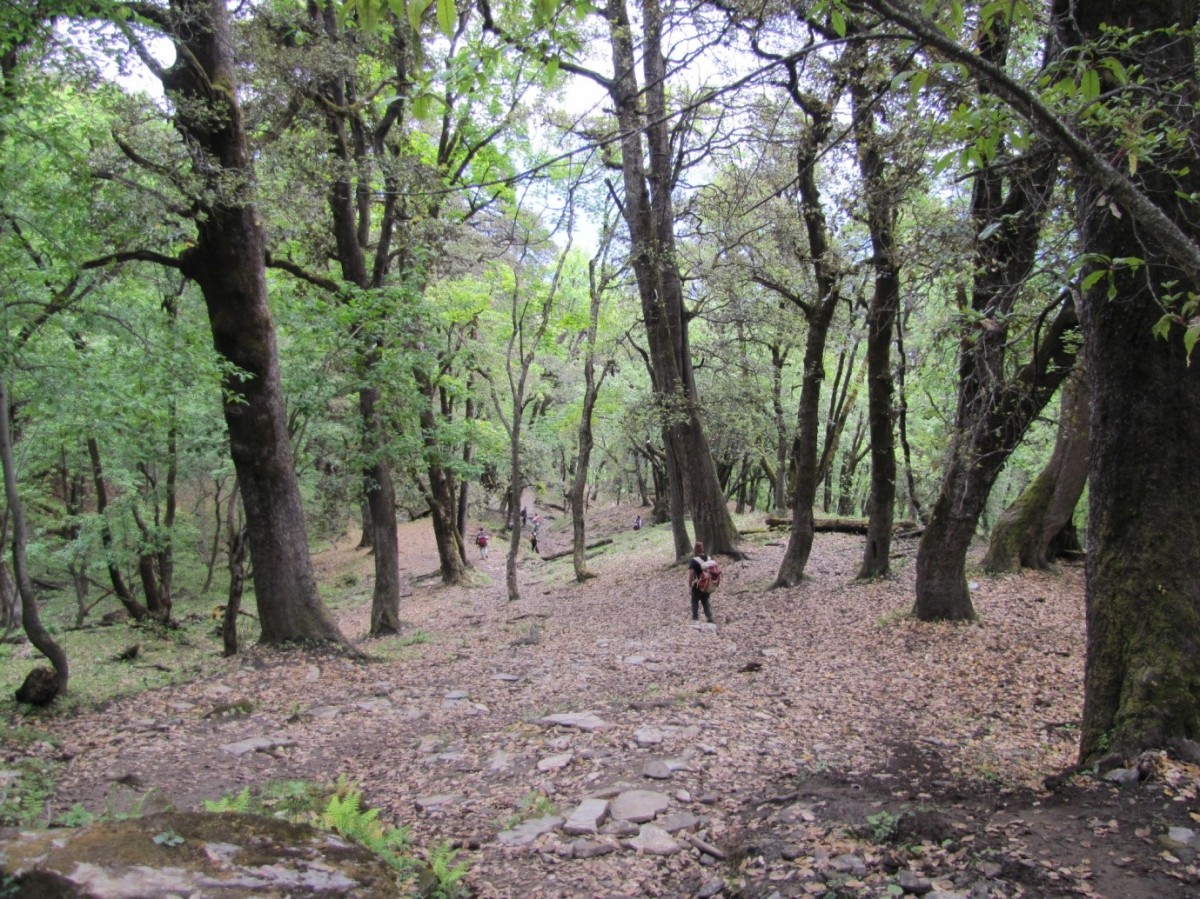
Downhill to Naya Tapru
This trek was all downhill, and here we came across lots of trekkers from foreign countries as well as school children. They chose Naggar-Rumsuk-Naya-Tapru trek route to reach Chanderkhani Pass. The route was through dense forests. The route was an easy one, however, due to the downhill route; it hurt the calves and toes the most. We reached Rumsuk. There were lots of taxis waiting to take us to Naggar Bus Stand. They charged Rs 100 per person. After reaching to Naggar Museum, I was all tired. I requested Indian Curator at the museum to arrange a taxi for me. Even after his engagements at the inauguration of exhibition at Museum, he arranged for a taxi. I took taxi to reach to Naggar and from Naggar, a bus to reach to Seobagh Base Camp. The bus takes Rs 20 per person.
After reaching Base Camp, I finished formalities, took my luggage and was awarded a Certificate of successfully completing the trekking expedition to Chanderkhani Pass.
While penning down my experience, I am once again determined to go for next trekking expedition. “One can’t take a breath large enough to last a lifetime; one can’t eat a meal big enough so that one never needs to eat again. Similarly, I don’t think any climb can make you content never to climb again.” – Woodrow Wilson Sayre
Have you summit Chandrakhani Pass? Which route did you take to summit? What were your experiences?
For part 5, click here: Part 5
For part 1, click here: Part 1
For part 2, click here: Part 2
For part 3, click here: Part 3












